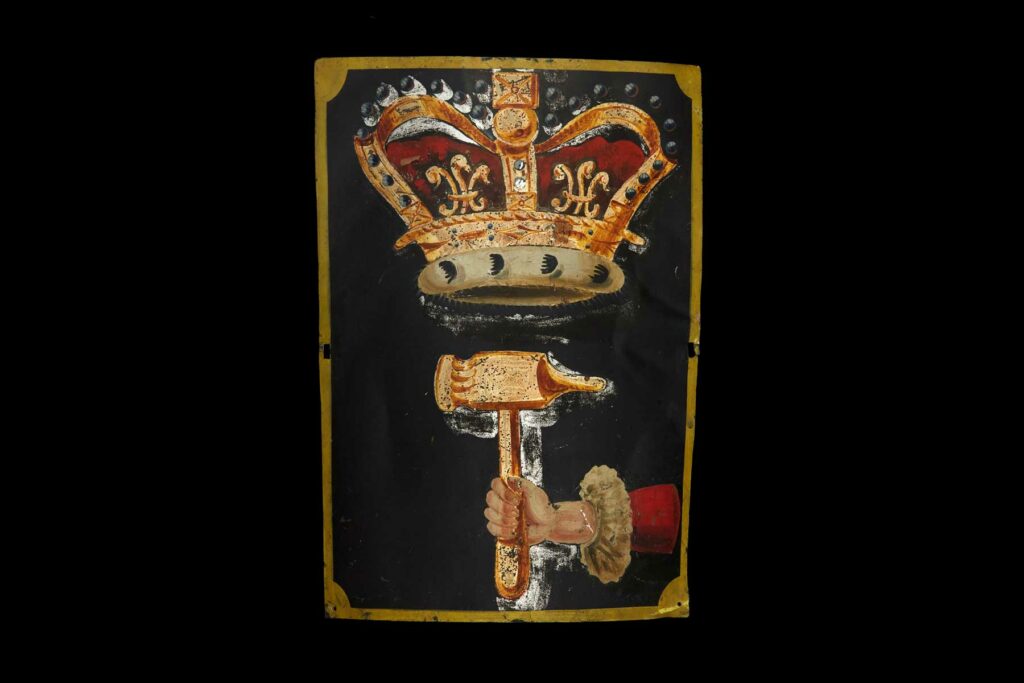
This tinplate plaque illustrates the emblem of the Hammermen in all its glory. The colours on this ceremonial object are as vivid today as when it was made in around 1830. It shows the hammer under the royal crown, symbolising both the main tool of the Trade, and their status within the Royal Burgh of Stirling.
The Hammermen were the first of the Seven Incorporated Trades of Stirling. Their motto is ‘By hammer in hand all arts do stand’ – there is no doubt here of their importance to other craftsmen too. The hammer is, after all, one of the first tools made by man!
The Seven Incorporated Trades regulated trade and commerce within the Burgh. The others are the Weavers, Tailors, Shoemakers, Fleshers (butchers), Skinners (who tanned skins for leather) and the Baxters (bakers).
The Hammermen ranged from the gold and silversmiths of the court to the blacksmiths and farriers who made tools and equipment essential to everyday life. The Trade also included clock makers, jewellers, armourers and pewterers – in fact, everyone who made goods from metal.
Before the Reformation in 1560, each of the Trades would have had an alter dedicated at one of the town’s churches. The Hammermen paid for an alter at the Church of the Holy Rude. This was dedicated to their patron, St Eloi, a sixth century French bishop. A famed goldsmith who made a bejewelled throne for King Clovis, Eloi later turned to the priesthood.
Today, the Stirling Hammermen exist as a social and charitable organisation.